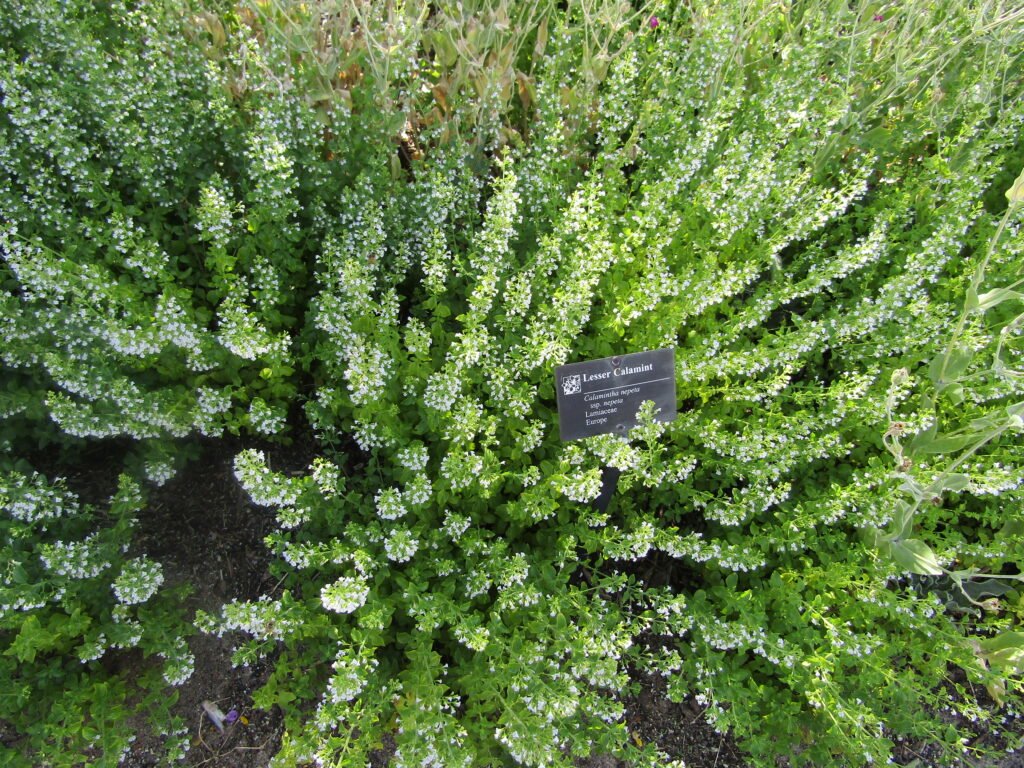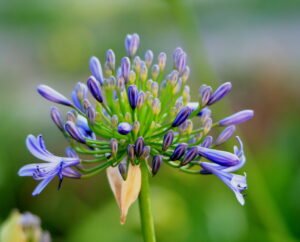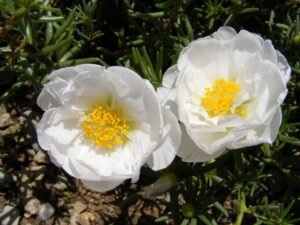Calamint: How to Grow and Care for Calamint

Photo by cultivar413 on flickr As Per licenses
Calamint, botanically known as Calamintha, is a versatile and enchanting member of the Lamiaceae family, which also includes other aromatic herbs such as mint, basil, and oregano. Commonly referred to as calamint, this plant is widely recognized for its delicate, lavender-blue flowers and fragrant foliage. Native to regions across Europe, North Africa, and parts of Asia, calamint thrives in temperate climates and is well-suited to various garden environments. This article explains in detail how to grow and care for Calamint plants.

Calamint is a perennial herb that typically reaches a height of 12 to 24 inches, depending on the specific variety. The plant’s stems are square-shaped, a characteristic feature of the mint family, and its leaves are small, ovate, and serrated. The flowers, which bloom from late spring to early autumn, are tubular and bilaterally symmetrical, attracting a myriad of pollinators such as bees, butterflies, and other beneficial insects. This makes calamint an excellent addition to any garden focused on promoting biodiversity and supporting local ecosystems.
Photo by Leonora (Ellie) Enking on flickr license
Facts About Calamint
Calamint History
Historically, Calamint has been highly valued across various cultures for its versatile applications. In ancient Greece and Rome, it was commonly used for its medicinal properties, believed to aid in digestive issues, respiratory conditions, and general wellness. Medieval herbalists also cherished Calamint, incorporating it into remedies for ailments such as headaches and fevers. This plant’s enduring legacy in traditional medicine underscores its significant role in human health and culture over the centuries.
Calamint Plant Facts
Common Names: The common names of calamint vary across cultures, reflecting its widespread use and cultural significance. In English-speaking regions, it is often referred to as “lesser calamint” or “mountain balm,” highlighting its soothing properties and mountainous origins. In Mediterranean countries, calamint is known as “nepitella” or “nepeta,” drawing a connection to the closely related catnip plant.
Sunlight: Given its origins and natural habitat, calamint is well-adapted to areas that receive ample sunlight, although it can tolerate partial shade.
Hardiness Zones: Calamint is particularly suited to hardiness zones 5 through 9. These zones encompass regions where annual minimum temperatures range from -20°F (-28.9°C) to 30°F (-1.1°C).
Spread & Height: Calamint (Calamintha spp.) exhibits a moderate spread that makes it a versatile addition to various garden settings. Typically, calamint plants spread horizontally between 12 to 24 inches, depending on the specific species and environmental conditions. Calamint (Calamintha nepeta) is a versatile herb known for its moderate height and ease of maintenance. Typically, calamint reaches a height of 12 to 18 inches at maturity.
Flowering Time: Calamint typically blooms from late spring to early autumn, with the peak flowering period falling between June and September.
Toxicity: Despite its beneficial uses, calamint contains toxic compounds that pose significant health risks. The primary toxic components of calamint are pulegone and menthone. Pulegone is a monoterpene ketone that, in high doses, can be harmful to the liver and may cause severe toxicity. Menthone, another monoterpene, can also contribute to the toxic effects. These compounds are known to affect both humans and animals adversely.
Annual/Perennial: Calamint is a perennial plant. It is advised to protect it from frost in winters.
Choosing the Right Variety
When it comes to selecting the right calamint for your garden, understanding the distinct varieties available is crucial. Among the most popular types are Calamintha nepeta, Calamintha grandiflora, and Calamintha sylvatica. Each variety offers unique features that cater to different garden conditions and aesthetic preferences.
Calamintha nepeta, also known as lesser calamint, is a favorite among gardeners for its compact size and prolific blooming. This variety typically reaches a height of 12 to 18 inches and produces an abundance of small, tubular flowers in shades of white, pale pink, or light blue. The flowers are known to attract pollinators, making it an excellent choice for a pollinator-friendly garden. Its dense foliage and aromatic leaves also add to its appeal.
Calamintha grandiflora, or large-flowered calamint, stands out with its more substantial blossoms. Growing up to 24 inches tall, this variety features larger flowers, often in striking hues of pink or lavender. The robust growth habit of Calamintha grandiflora makes it suitable for adding vertical interest to garden beds or borders. Additionally, its extended blooming period ensures a long-lasting display of color throughout the growing season.
Calamintha sylvatica, commonly referred to as woodland calamint, thrives in slightly shaded environments. This variety can grow up to 36 inches tall and is characterized by its delicate, lavender-blue flowers and bushy growth. It is particularly well-suited for woodland gardens or shaded borders where it can add a touch of color and texture. Due to its preference for cooler, shaded areas, Calamintha sylvatica is an ideal option for gardens in temperate climates.
When choosing the right calamint variety, consider your garden’s climate, soil conditions, and sunlight availability. Calamintha nepeta is versatile and can adapt to various environments, making it a reliable choice for most gardens. For those looking to incorporate larger, more vibrant flowers, Calamintha grandiflora offers a visually striking option. Gardeners in cooler, shaded regions may find Calamintha sylvatica to be the perfect fit. By selecting the appropriate variety based on these factors, you can ensure a thriving and visually appealing garden.
How To Plant Calamint
Planting Calamint can be achieved through seeds, cuttings, or nursery plants, each method having its own set of guidelines to ensure robust growth. The ideal time for planting calamint is in the spring or fall when temperatures are mild, providing a conducive environment for the plant to establish itself.
Through Seeds
To start with seeds, sow them in a well-drained seed-starting mix. Seeds should be lightly covered with soil and kept moist until germination, which typically occurs within 14-21 days. If starting indoors, plant seeds about 6-8 weeks before the last frost date. Once seedlings have developed a few sets of true leaves, they can be transplanted outdoors.
Through Cuttings
For those using cuttings, take 4-6 inch cuttings from a healthy calamint plant in the early spring. Remove the lower leaves and dip the cut end in rooting hormone for better success. Plant the cuttings in a potting mix and keep them moist until roots develop, which should take a few weeks. After rooting, gradually acclimate the young plants to outdoor conditions by placing them outside for a few hours each day, increasing the time daily.
Through Nursery Plants
Nursery plants offer a convenient option and can be planted directly into the garden. In order to promote drainage and fertility, prepare the soil by working in compost or well-rotted manure. Calamint prefers a sunny location with well-drained soil. Space the plants about 12-18 inches apart, as they will spread to form a dense mat over time.
When planting, dig a hole slightly larger than the root ball and place the plant at the same depth it was growing in the pot. To help the roots settle, compact the dirt around the base and give it plenty of water. For the first few weeks, maintain consistent moisture to help the plant establish itself, tapering off as it becomes more resilient.
By following these steps, you can ensure a healthy start for your calamint plants, setting the stage for a vibrant addition to your garden.
How To Care For Calamint
Sunlight
Sunlight is a critical factor in the growth and health of Calamint. In the wild, the plant is accustomed to receiving full sun, which ensures that it gets the energy required for photosynthesis and vigorous growth. When grown in partial shade, Calamint may still survive, but it often exhibits less robust growth and fewer flowers. Therefore, replicating these sunny conditions in your garden is vital for achieving the best results.
Soil
Calamint thrives best in well-draining soils, making sandy or loamy textures particularly suitable for its cultivation. These soil types ensure that excess water does not accumulate around the plant roots, thereby preventing potential issues such as root rot. The granular nature of sandy soil allows for excellent drainage, while loamy soil, with its balanced mix of sand, silt, and clay, offers both good drainage and adequate nutrient retention.
The pH level of the soil is another crucial factor in calamint cultivation. Calamint prefers a slightly alkaline to neutral pH range, ideally between 6.5 and 7.5. Maintaining this pH range helps the plant to efficiently absorb essential nutrients from the soil. Testing soil pH can be done using a simple home test kit or by sending a soil sample to a local agricultural extension office. Should the soil pH need adjustment, agricultural lime can be used to increase alkalinity, while sulfur or aluminum sulfate can help lower it.
Incorporating organic matter into the soil greatly enhances its fertility and structure, providing a more conducive environment for calamint growth. Organic matter, such as compost or well-rotted manure, increases the soil’s nutrient content, improves moisture retention, and promotes beneficial microbial activity. Adding a layer of compost or manure to the soil before planting can significantly improve its quality, fostering healthier and more vigorous calamint plants.
Watering
Proper watering is crucial for the successful growth of calamint. This resilient herb thrives in well-drained soil and does not tolerate waterlogged conditions. Overwatering can lead to root rot and other fungal diseases, so it is essential to find a balance that supports healthy growth without oversaturating the soil. Generally, calamint should be watered when the top inch of soil feels dry to the touch.
During the spring and summer months, calamint may require more frequent watering due to higher temperatures and increased evaporation. It is advisable to water the plant once or twice a week, depending on the weather and soil conditions. In contrast, during the cooler autumn and winter months, watering should be reduced significantly, as the plant’s growth slows down and less water is needed. Always ensure that the soil is well-drained to prevent excess moisture from accumulating around the roots.
Fertilizing
Fertilizing calamint is best approached with moderation. While the plant does not demand heavy feeding, providing the right nutrients can enhance its growth and vitality. A balanced, slow-release fertilizer applied in early spring can support the plant’s development throughout the growing season. Organic fertilizers, such as compost or well-rotted manure, are excellent options as they enrich the soil with essential nutrients and improve its structure. Additionally, organic fertilizers are less likely to cause nutrient burn or harm beneficial microorganisms in the soil.
For those who prefer synthetic fertilizers, a balanced 10-10-10 formula can be used sparingly. It is recommended to apply synthetic fertilizers once in the spring and, if necessary, once more in mid-summer. However, avoid over-fertilizing, as excessive nutrients can lead to lush foliage at the expense of flowers. By adhering to these guidelines, gardeners can ensure that their calamint plants receive the appropriate care, resulting in healthy, vibrant growth throughout the year.
Pruning and Maintenance
Proper pruning is essential for cultivating a healthy and flourishing calamint plant. Regular pruning encourages bushier growth and enhances the plant’s overall appearance. To maintain a compact and attractive shape, prune calamint in early spring before new growth begins. Cut back about one-third of the plant’s height, focusing on removing any dead or damaged stems. This practice not only stimulates denser foliage but also promotes more abundant flowering.
Deadheading spent flowers is another crucial aspect of calamint plant care. By removing faded blooms, you can prolong the blooming period and ensure a continuous display of flowers throughout the growing season. Simply pinch off the spent flowers just above the first set of healthy leaves to encourage new blooms to form.
Weeding and mulching are also vital maintenance tasks for calamint. Regular weeding prevents competition for nutrients and water, ensuring that your calamint thrives. Encircling the base of the plant with an organic mulch layer aids in moisture retention, weed control, and temperature regulation of the soil. Be careful not to pile the mulch too close to the stem, as this can lead to rot.
Pests and Diseases
In terms of pest control, calamint is generally resilient and less prone to pest infestations. However, keep an eye out for common garden pests such as aphids, spider mites, and whiteflies. If detected, treat the affected plants with an appropriate insecticidal soap or neem oil. Regular inspection and prompt action can prevent minor pest issues from becoming significant problems.
Common issues to watch out for include powdery mildew and root rot, both of which can be mitigated through proper watering practices and ensuring good air circulation around the plant. Avoid overhead watering and ensure the soil has good drainage to prevent root rot. Additionally, spacing plants adequately will help reduce the risk of fungal diseases by improving airflow.
Overwintering
Proper care for your calamint plant during the winter months is crucial to ensure its survival and vigorous growth in the coming seasons. When facing colder climates, specific strategies can help protect your calamint from frost and other harsh winter conditions.
One effective method to shield your calamint from frost is mulching. Apply a thick layer of mulch around the base of the plant to insulate the roots from freezing temperatures. Organic materials such as straw, leaves, or wood chips are excellent choices for mulch. This layer not only retains soil moisture but also regulates the temperature, creating a more stable environment for the calamint.
For potted calamint plants, consider bringing them indoors. Place the pots in a cool, but frost-free location, such as an unheated garage or a basement. Ensure the space receives some light, as this will help the plants maintain minimal growth without becoming stressed.
As winter approaches, it is also advisable to reduce watering. Calamint plants enter a period of dormancy and do not require as much moisture. During this period, excessive watering might cause root rot and other problems. Use minimal water to prevent the soil from drying up entirely.
Another important step in overwintering calamint is cutting back the foliage. Prune the plant down to a few inches above the ground. This prepares the calamint for dormancy and reduces the plant’s energy expenditure during the colder months. Pruning also helps prevent diseases and pests from overwintering in the foliage.
By implementing these methods—mulching, reducing watering, bringing potted plants indoors, and cutting back foliage—you will effectively protect your calamint plant throughout the winter. This care routine ensures that your calamint will emerge healthy and ready to thrive when the warmer weather returns.
Benefits and Uses of Calamint
Calamint is a versatile herb that offers a plethora of benefits and uses, making it a valuable addition to any garden. One of the primary advantages of growing calamint is its appeal to pollinators. The fragrant flowers of the calamint plant attract bees, butterflies, and other beneficial insects, thereby promoting biodiversity and enhancing the health of your garden ecosystem. This natural attraction helps in pollinating various other plants, thus boosting the overall productivity of your garden.
In the culinary realm, calamint can be used to add a unique flavor to a variety of dishes. Its minty, slightly oregano-like taste makes it an excellent herb for seasoning meats, stews, and sauces. One simple recipe to incorporate calamint is calamint-infused olive oil. To prepare, gently heat olive oil and add fresh calamint leaves, allowing the mixture to steep before straining. This infused oil can be drizzled over salads, roasted vegetables, or used as a bread dip, providing a subtle, aromatic enhancement.
Calamint also holds significant medicinal value. Traditionally, it has been used in herbal remedies to treat ailments such as digestive issues, respiratory problems, and headaches. A calming calamint tea can be made by steeping a teaspoon of dried calamint leaves in hot water for about 10 minutes. This soothing tea can help relieve stress and improve digestion.
Furthermore, calamint plays an essential role in companion planting. Its strong scent deters pests, making it an effective natural pest repellent when planted alongside vegetables and other vulnerable plants. This ecological benefit reduces the need for chemical pesticides, promoting a healthier and more sustainable garden environment.
In summary, growing calamint in your garden not only adds beauty but also offers culinary delights, medicinal benefits, and ecological advantages. Its multipurpose nature makes it a worthy investment for both seasoned gardeners and beginners alike.





